1. St. Augustine, Florida
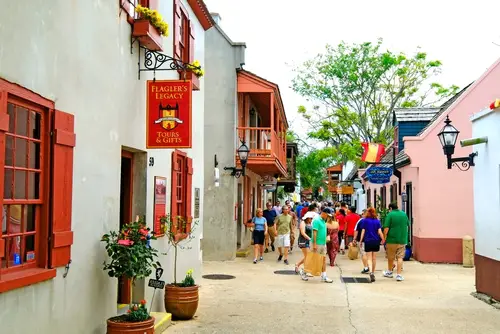
You might walk through St. Augustine’s palm-lined streets and think it’s just another coastal resort town, but it’s actually the oldest continuously inhabited European-founded city in the continental U.S. Founded by the Spanish in 1565, it predates Jamestown and Plymouth by decades. The pastel buildings and cobblestone streets may look refreshed for tourists, but they trace back to centuries of reconstruction and cultural mixing. It’s a city that hides its 450-plus years of history behind a charming coastal polish.
What makes St. Augustine deceptive is how well it’s adapted to modern tourism. The waterfront, lined with cafés and art galleries, feels new, but just around the corner are centuries-old coquina structures like the Castillo de San Marcos. Even the “oldest house” museum sits unobtrusively amid lively, youthful crowds. It’s living proof that history and modern life can coexist seamlessly.
2. Santa Fe, New Mexico

Santa Fe’s adobe buildings might seem like an aesthetic trend, but they’re part of a centuries-old tradition. Founded in 1610, it’s the oldest state capital in the U.S. and predates the Pilgrims landing at Plymouth. Most visitors don’t realize the modern-looking Plaza area was once a Spanish colonial administrative hub. What appears like a sleek arts district is actually one of North America’s oldest continuously inhabited communities.
The city’s charm lies in how it blends that deep history with modern design. The Pueblo Revival style, though codified in the 20th century, draws from architecture that’s been here for over 400 years. Local landmarks like the Palace of the Governors date back to the early 1600s but look timeless. Santa Fe is proof that “old” doesn’t have to mean “ancient-looking.”
3. Natchitoches, Louisiana
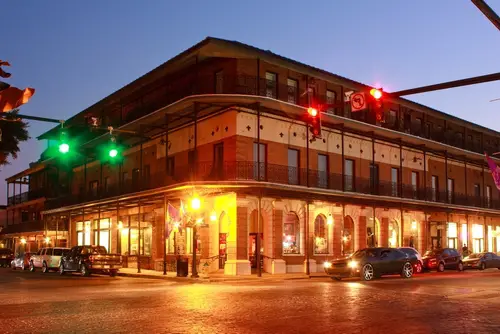
At first glance, Natchitoches looks like a cute riverfront town with a Hollywood sheen — especially after appearing in Steel Magnolias. But it’s actually the oldest permanent settlement in the Louisiana Purchase territory, founded in 1714. Long before Louisiana was part of the U.S., French explorers were already living and trading here. Its colorful facades and iron balconies make it look new, but the bones of the town are pure colonial history.
Visitors are often surprised to learn that the town predates New Orleans by four years. Even the Cane River’s modern boardwalk sits where early trading posts once stood. It’s a place that feels like a film set but has lived through Spanish rule, the Civil War, and Reconstruction. Natchitoches wears its age beautifully — like a Southern belle who never tells her real birthday.
4. Annapolis, Maryland
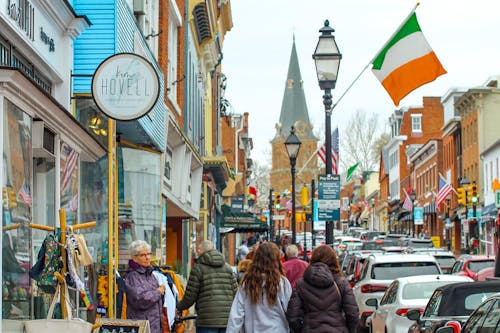
With its shiny sailboats and polished waterfront, Annapolis feels like a fresh, well-kept nautical town. But it’s been around since 1649 and served as the temporary U.S. capital in 1783–84. The Maryland State House, still in use, is the oldest state capitol in continuous legislative operation. You’d never guess a city this lively was already bustling before Washington, D.C., even existed.
Annapolis’s charm comes from its preservation — everything feels clean and modern, yet many buildings date back to the 1700s. Walk a few blocks from the marina and you’ll find narrow colonial streets with centuries-old brick row houses. It’s a strange paradox: a historic town that feels brand new every summer. But scratch beneath the gloss, and you’re standing in one of America’s oldest seaports.
5. New Castle, Delaware
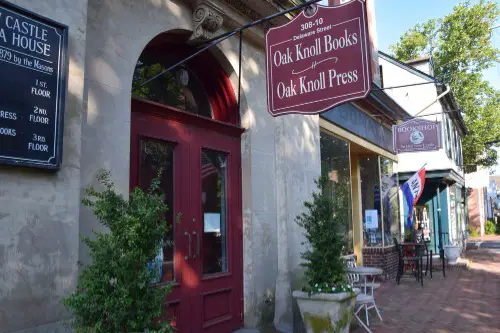
New Castle looks like a quiet, manicured riverside suburb, but its history goes way back to 1651. Originally a Dutch settlement named Fort Casimir, it passed through Dutch, Swedish, and English hands before Delaware was even a colony. The neat Georgian homes might trick you into thinking they’re 19th-century rebuilds, but many have stood since the 1700s. Its streets are among the most authentic colonial grids still intact today.
People often miss just how historically layered New Castle is because it doesn’t shout about it. There’s no major skyline or flashy tourism industry — just a town quietly older than most of the East Coast. The Courthouse Green is still the same spot where William Penn first landed in America. It’s a perfectly preserved slice of the 17th century disguised as a commuter town.
6. Sonoma, California
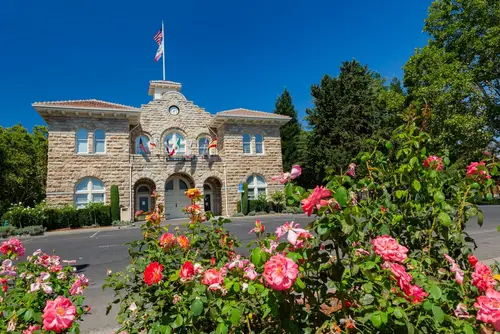
Sonoma’s wineries and minimalist architecture make it feel like a polished new destination. But its roots stretch back to the early 1800s, when it was a Mexican military post and the site of the 1846 Bear Flag Revolt. The town square may look curated for tasting rooms, but it’s the oldest continuously used plaza in California. Many of its “new-looking” adobe buildings have been standing since the 1830s.
What’s funny is that most tourists think of Sonoma as “the new Napa.” Yet it’s technically older and far more historically significant. General Vallejo’s home and mission buildings still stand as witnesses to California’s turbulent transition from Mexico to the U.S. It’s a place where sipping chardonnay can double as a history lesson.
7. Portsmouth, New Hampshire
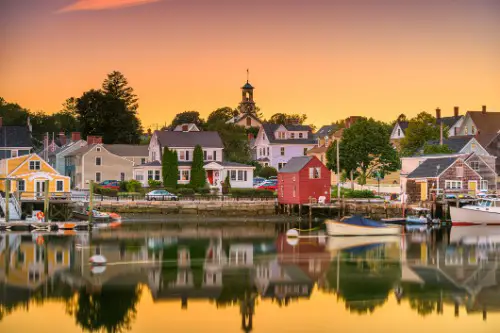
Portsmouth’s colorful shops and coastal cafes make it feel like a reinvention story, but it’s one of the oldest seaports in New England. Settled in 1623, it was thriving before Boston was even founded. The red-brick downtown looks revived, but it’s been in use for centuries. The cobblestones and wharves have simply been updated to handle more tourists than sailors.
That mix of history and liveliness is part of its magic. Buildings like the Moffatt-Ladd House and the John Paul Jones House date back to the Revolutionary era. Even Market Square, which feels like a trendy shopping district, sits atop colonial foundations. Portsmouth is a reminder that “quaint” doesn’t always mean “newly built.”
8. Natchez, Mississippi

It’s easy to see Natchez as another pretty river town with antebellum mansions, but it’s far older than that image suggests. Founded by the French in 1716, it predates both New Orleans and much of the Deep South’s better-known cities. The town’s current look — stately, graceful, refined — masks a rough frontier history. Before cotton barons arrived, this was a trading post and Native American settlement site.
Natchez’s genteel appearance today comes from 19th-century wealth layered atop 18th-century bones. The downtown grid and bluff location still follow original French plans. Tourists see mint juleps and manicured gardens, not the centuries of change underneath. It’s one of those rare Southern towns that’s older than it pretends to be.
9. Kaskaskia, Illinois
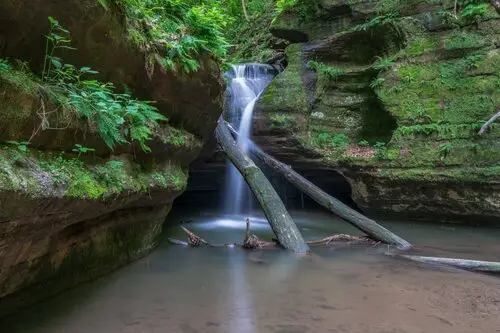
You wouldn’t expect Illinois’s first capital to be a near-ghost town on an island, but that’s Kaskaskia. Founded in 1703 by French missionaries, it was once the heart of the Illinois Territory. Flooding and river shifts destroyed much of it, which is why what remains looks so modest. Yet it’s technically one of the oldest European settlements west of the Appalachians.
Today, only a few residents remain, and most visitors don’t realize they’re standing on what was once the state’s political hub. The Liberty Bell of the West, cast in 1741, still hangs there. Its modern obscurity hides the fact that it predates Chicago by more than a century. Kaskaskia proves that age doesn’t always equal grandeur.
10. Taos, New Mexico
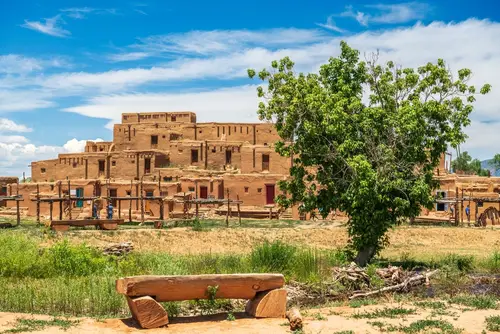
With its art galleries and desert vibe, Taos feels like a hip creative enclave. But Taos Pueblo — part of the town — has been continuously inhabited for over 1,000 years. Spanish colonists established the modern town in the early 1600s, making it one of the oldest European settlements in the U.S. What feels new-agey is actually ancient.
The Pueblo itself, made of adobe structures, still houses descendants of the original residents. Downtown Taos has grown into a tourist destination, but it hasn’t lost that historical continuity. Every layer of the town, from Indigenous to Spanish to American, remains visible if you look closely. It’s a deceptively ancient place hiding behind a modern art scene.
11. Lewes, Delaware
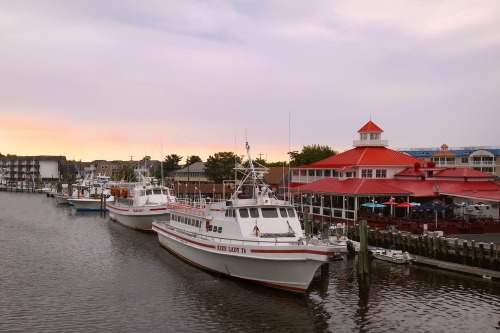
Lewes looks like a polished beach town, but its origins date to 1631 — making it one of the first European settlements in the Mid-Atlantic. Originally founded by the Dutch, it was destroyed and rebuilt multiple times. Despite that, its harbor layout and some street patterns trace back to the 17th century. The tidy shops and seafood shacks disguise centuries of maritime history.
Most people associate Delaware’s coast with newer resort areas like Rehoboth, not realizing Lewes predates nearly every major American port. The Cannonball House, hit during the War of 1812, still stands as proof. The town’s low-key vibe hides its status as one of the oldest on the Eastern Seaboard. It’s beachy, beautiful — and quietly ancient.
12. San Antonio, Texas
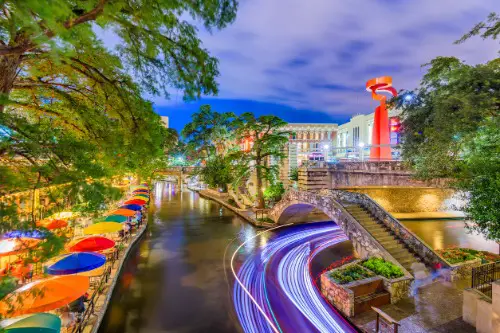
San Antonio feels like a modern city that sprang up around the River Walk, but it’s one of the oldest in the U.S. The Spanish established the Mission San Antonio de Padua and the Alamo in 1718. Long before skyscrapers and Spurs games, it was a key frontier outpost. Today’s skyline hides a colonial foundation that’s over 300 years old.
Many visitors come for the Alamo without realizing the whole city grew from that mission system. Neighborhoods like La Villita retain street layouts from the 1700s. The city’s mix of history and innovation makes it feel timeless, not ancient. That’s the secret to San Antonio’s deceptive youth.
13. Astoria, Oregon
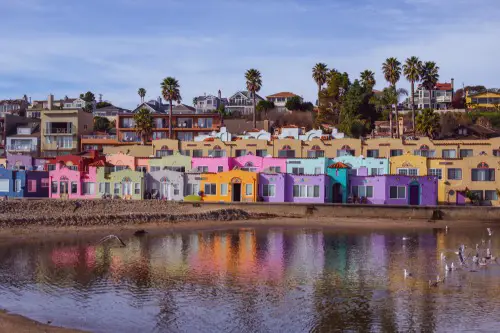
Astoria’s modern riverfront and maritime museums make it feel like a revived port town. In truth, it’s the oldest American settlement west of the Rockies, founded in 1811 by John Jacob Astor’s fur traders. Fires and rebuilding campaigns have made it look newer than it is. But beneath that fresh façade is a site with roots in early American expansion.
The Lewis and Clark Expedition even camped nearby before Astoria’s founding. Its rebuilt Victorian homes hide the layers of trade, exploration, and maritime struggle. The town you see now is really the fourth or fifth version of itself. Age, in Astoria’s case, has learned how to hide well.
14. Williamsburg, Virginia
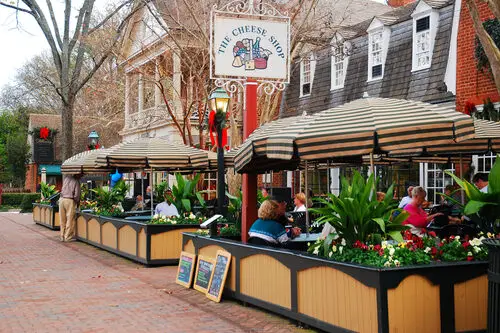
It’s easy to think Colonial Williamsburg is just a recreation for tourists, but the town itself is genuinely old. Founded in 1632, it served as Virginia’s capital for much of the 18th century. The reason it feels “new” is that Rockefeller-funded restorations in the 20th century rebuilt much of it to its original look. What feels like a historical theme park is, in fact, authentic ground.
Beneath the restorations are genuine colonial foundations and streets that once saw Jefferson, Washington, and Madison. The careful upkeep tricks visitors into forgetting how old it really is. Williamsburg’s newness is deliberate — a preservation illusion that keeps its 17th-century bones shining. It’s living history disguised as nostalgia.
15. Park City, Utah
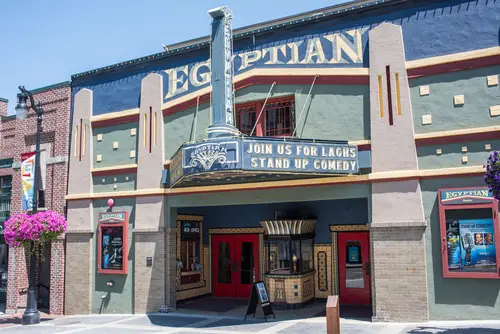
Park City’s clean lines, ski lodges, and boutique stores make it seem like a creation of modern tourism. But it was founded in 1869 as a silver mining town long before anyone thought of Sundance or ski lifts. Fires and boom-bust cycles led to multiple rebuilds, giving it a much younger appearance. Yet under those fresh façades lie shafts and tunnels from the 19th-century mining days.
It’s a city that’s literally reinvented itself — from mining to skiing, from grit to glamor. The Main Street Historic District hides restored Victorian structures beneath the gloss. Most people don’t realize how much of its past is preserved, just repainted. Park City is proof that some old towns wear new coats very well.
This post 15 U.S. Towns That Look New But Are Older Than Their Histories Claim was first published on American Charm.


